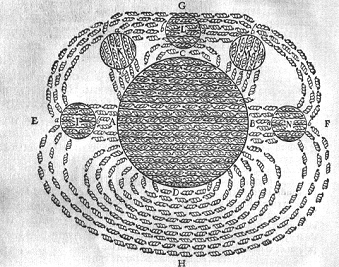In 1644 Cartesius published Principia
philosophiae, in which he formulated
three laws of dynamics. In the year of Torricelli's experiment Cartesius
didn't accepted the existence
of the vacuum. World is filled with a matter,
divided into particles. Every of them can be furtherly divided. Objects act
each with other it they are in contact, if they are apart they can emit other particles, around them and
in other objects directions.



